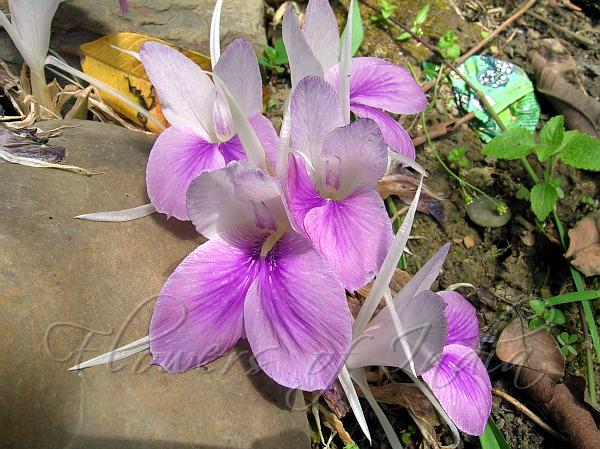|
| Bhumi Champa |
|

|

| File size | 1044608 |
| Original date | 5/3/08 12:53 PM |
| Resolution | 2048 x 1536 |
| Flash | Flash did not fire, auto |
| Focal length | 5.5mm |
| Exposure time | 1/126s |
| Aperture | 4.8 |
| Focus Distance | |
| Metering Mode | Partial |
| Camera make | NIKON |
| Camera model | E3700 |
| Sensor type |
|
|
|
|
Photo: |
Botanical name: Kaempferia rotunda Family: Zingiberaceae (Ginger family)
The Hindi and Manipuri names for this flower mean flower of the earth,
which comes from the fact that the flower emerges straight from the ground,
even before the leaves appear. It is native to Southeast Asia and a member
of the ginger family. There are an estimated fifty
species of Kaempferia generally known as the "peacock gingers" for their
colorful leaves. As if by magic flowers arise from bare ground. Bulbs that
have laid dormant and leafless, hiding through winter, reappear. The
blossoms arise from the rhizome one or two at a time, each lasts only two
or three days, but the plant blooms for four to five weeks.The leaf
development is amazing. The back of the leaf is purple, the front is green
and patterned with silvery marks. They begin emerging toward the end of the
flowering period. Tightly rolled, the leaves resemble purple spikes. When
the leaf blade is free of the soil, a height of 10 inches or more, it
unfurls like a banner.
| Identification credit: Tabish | Photographed in Imphal, Manipur. |
• Is this flower misidentified? If yes,